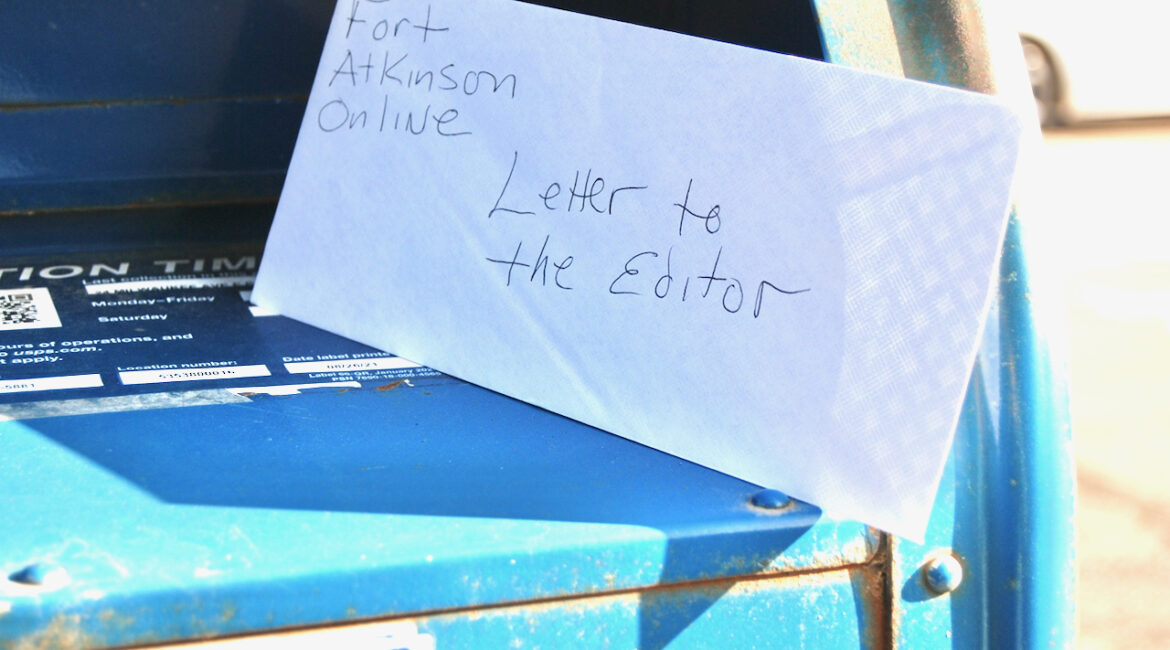Letter to the editor:
At the January 15th Fort Atkinson School Board Meeting, President Kory Knickrehm asked the following important question regarding the upcoming three-year $6.5 million per year referendum: “A lot of what I hear is the confusion of what do you mean when you’re asking for $6.5 million per year, how does that not impact my property taxes or how can you levy the same amount? Can you explain that a little bit?”
The answer by FASD Business Services Director Mr. Nathan Knitt followed and can be heard starting at 41.43 of this link: January 15, 2024 FASD School Board Meeting Video Link
A more transparent answer to Mr. Knickrehm’s question follows.
At the December 2022 School Board meeting the administration presented a spreadsheet (see below) showing that the school district’s mill rate was set to drop from $10.95 in 2022 to $6.49 in 2023. After the April 2023 operating referendum failed, the school board had a choice of leaving the mill rate at $6.49 or increasing the mill rate to prepay $7 million in longterm debt. The school board chose for the large tax increase and so the 2023 mill rate was set at $9.61 instead of $6.49.
Why was this done? At various times last year, the administration suggested to the school board that it could “position” the tax levy so that the upcoming spring 2024 referendum will, theoretically, have a better chance of passing. This could be done by inflating the tax levy to prepay debt. The thinking being that this higher tax levy then “positions” the school district to say that the upcoming operating referendum will not increase property taxes in 2024 because taxes were already increased the higher level needed in 2023.
Key to all of this is that in 2023 the school district did not need voter permission to increase property taxes by $7 million to pre-pay debt, but in 2024 it does need voter permission to maintain these higher taxes to exceed revenue caps and pay for $6.5 million in operating expenses in each of the next three years.
This maneuver — Mr. Knitt’s word — caused taxpayers to pay the following in extra property taxes so the school district could prepay long term debt in 2023.
(9.61 – 6.49) x $100 = +$312 extra on a $100,000 house
(9.61 – 6.49) x $200 = +$624 extra on a $200,000 house
(9.61 – 6.49) x $300 = +$936 extra on a $300,000 house
If the operating referendum passes, property taxes will essentially remain at the higher 2023 levels. If the referendum fails — i.e., taxpayers do not allow the school district to exceed state-imposed revenue limits — then 2024 property taxes will drop by the above amounts assuming no more debt is prepaid. Note: figures given are approximate and will vary depending on individual circumstances and taxing jurisdictions.
Regarding the arguments used to sell this strategy: First, most taxpayers would be better off prepaying their own mortgages vs. being taxed to help prepay low interest rate school district debt. Second, in 2022, taxpayers voted for a longterm $22 million referendum to be paid back over an extended term at favorable interest rates. They did not vote to pay off a third of the referendum in year one. Third, equating prepaying school district debt to prepaying a family mortgage is inaccurate. The money used to prepay debt was not extra money the school district had saved or earned. The school district had to tax for all of it. This is like raiding a child’s piggybank to prepay a mortgage. Fourth, comparing mill rates across many years, as is being done in FASD’s referendum advertising, is inaccurate per the city of Fort Atkinson’s recent information flyer (below).
The Fort Atkinson School District is not alone; the prepaying debt “strategy” is being used by other Wisconsin school districts. In most cases it goes unnoticed by local taxpayers and school boards. To read how taxpayers reacted in one school district where it was noticed, follow this link: Wrightstown Spirit Newspaper Reporting on Prepaying Debt Link.
Finally, terms like “positioning” and “maneuvering” — the school district’s words — are not what a taxpayer wants to hear with respect to the tax levy or mill rate. Everyone in Fort Atkinson wants to see FASD and its staff do well. Selling a referendum for something that everyone is predisposed to like should not be difficult. Pretending that there are no costs associated with a referendum is what makes it difficult.
Edwin Bos,
Fort Atkinson
Editor’s note: the letter writer included several attachments, some of which are found here: http://fortatkinsononline.com/wp-content/uploads/2024/02/tax-impact-letter-attachments-1-1.pdf, along with the image below.


File photo/Kim McDarison.
This post has already been read 1727 times!
